15 Great Things About The 14th Arrondissement Of Paris
There's a lot for travelers to explore in the 14th Arrondissement — from the Catacombs to Boulevard Montparnasse to the Observatory of Paris. So, if you want to get away from the tourist crowds, come along on a virtual walk to a dozen highlights of the district so many Parisians call home: nearly 140,000 of them live here and make full use of the shopping streets, the markets, the schools, and the parks.
![]()
Our Top-Rated Paris Experiences
1. Seine River Romantic Dinner Cruise… With live music & champagne
2. Cheese and Wine Tasting in a Private Paris Cheese Cellar… Learn from a Master Affineur
3. Louvre Masterpieces Tour… Skip the lines for the best experience
4. Dinner Cruise with Maxim's of Paris… An Art Nouveau experience from 1900
15 Great Things About the 14th Arrondissement
1. The Paris Catacombs
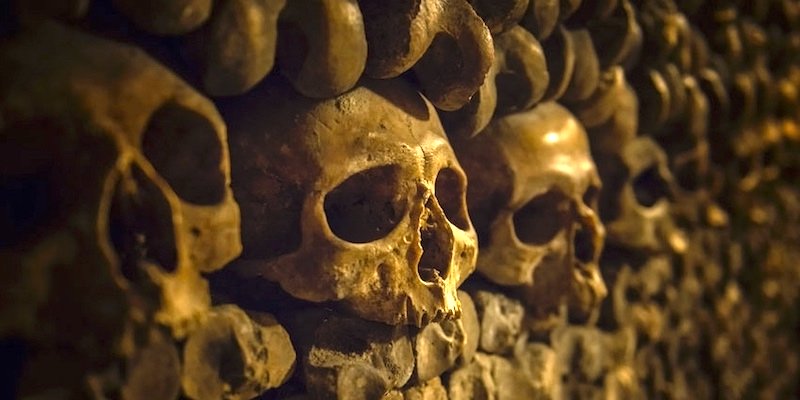 The Paris Catacombs – eerie yet fascinating
The Paris Catacombs – eerie yet fascinating
Although a trip to the Paris Catacombs is not everyone's cup of tea, it may well be a visit you never forget. In the 17th century, as the cemeteries of Paris filled up and spilled into the basements of neighboring houses, the city decided something had to be done. That's when the burial grounds were cleaned up (many of them even eliminated) and the bones of the dead moved to abandoned limestone quarries beneath the streets of the 14th Arrondissement.
A walk through the tunnels of the underground catacombs is an eerie reminder of the sometimes bizarre history of Paris. The tour is very likely to sell out, so be sure to book as soon as you can. The entrance to the Paris Catacombs is found at Place Denfert-Rochereau.
![]()
Discover What's On When You're Here...
• January... |
• February... |
• March... |
• April... |
• May... |
• June... |
• July... |
• August... |
• September... |
• October... |
• November... |
• December... |
Discover What's On When You're Here
• January...
|
• February... |
• March... |
|---|---|---|
• April... |
• May... |
• June... |
• July... |
• August... |
• September... |
• October... |
• November... |
• December... |
2. Musée de la Libération de Paris
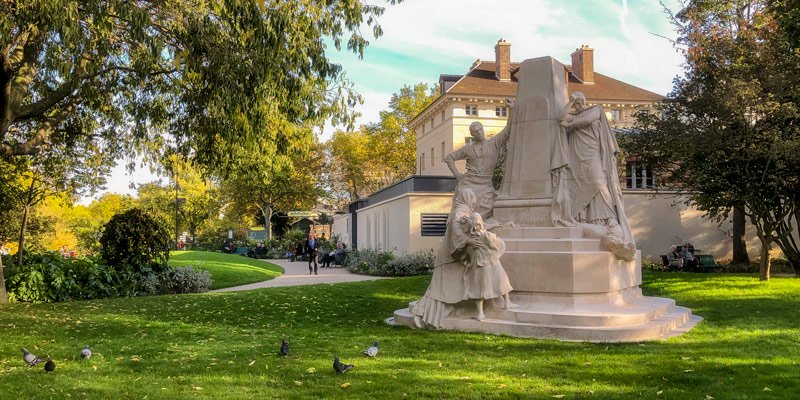 Musée de la Libération de Paris, photo by Mark Craft
Musée de la Libération de Paris, photo by Mark Craft
This multi-faceted museum moved to the 14th Arrondissement (across from the Paris Catacombs) from an odd location on the roof above the Gare de Montparnasse. La Libération concerns itself not just with the August 1944 Liberation of Paris, but also includes a museum dedicate to Musée Jean Moulin, covering the French Resistance during World War II.
That conflict remains an extremely important memory in France, as does the Resistance that fought against the German invaders. The important dates, the battles, and the heroes are etched into the French psyche. This museum remembers the poignant stories of two iconic French WWII leaders — Marshal Leclerc and Resistance leader Jean Moulin. It's a compelling and moving experience. Admission is free.
- 4 Avenue du Colonel Henri Rol-Tanguy
- 14th Arrondissement
3. The Observatory of Paris
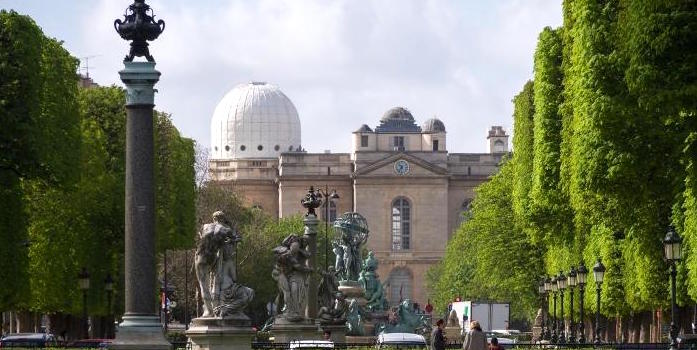 The Paris Observatory, on the avenue of the same name. Photo Wikimapia by aizmob.
The Paris Observatory, on the avenue of the same name. Photo Wikimapia by aizmob.
Established in 1667, the Observatoire de Paris is the oldest observatory in the world and today is the largest French research center in astronomy. The Paris observatory has two other campuses in France; a good one-third of all astronomers in France continue with research here. In the past you were been able to book a two-hour tour that would take you to the 19th-century dome and the telescope, but post-pandemic those visits seem have been suspended.
- 61 Avenue de l'Observatoire
- 14th Arrondissement
- Online Virtual Visit…
![]()
Romantic Dinner Cruises In Paris
|
VIP Dinner Cruise with Bateaux Parisiens |
Dinner Cruise by Maxim's of Paris |
|
VIP Dinner Cruise with Bateaux Parisiens |
4. Hotel Aiglon
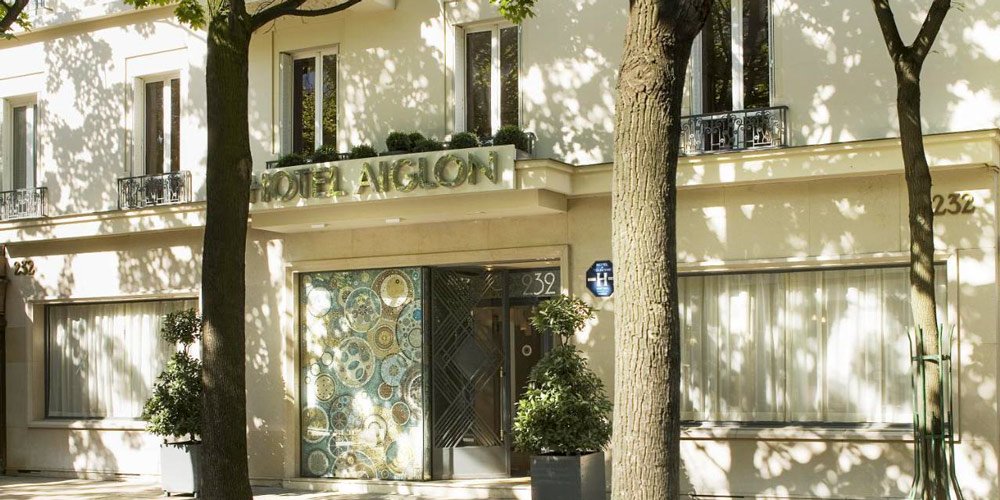 Hotel Aiglon on Boulevard Raspail
Hotel Aiglon on Boulevard Raspail
Nicely situated where the 14th meets the 15th and the 6th Arrondissements, and a few steps away from the Raspail Metro station, Hotel Aiglon is in the lively Montmartre district. Guests love the luxury rooms (some with a balcony), the modern decor, and the fact that staying in the 14th is cheaper than choosing a hotel located closer to the center of Paris. Although this location would be hard to be beat with nearby bars, restaurants and easy easy access to the rest of Paris.
5. Montparnasse Cemetery
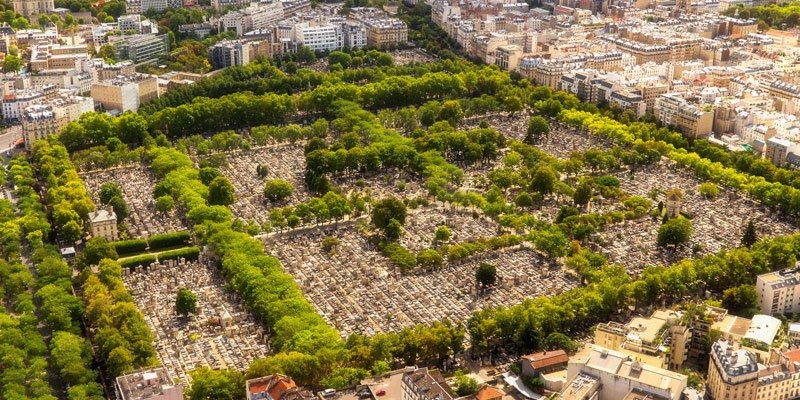 Montmartre Cemetery from Tour Montparnasse, photo by Mark Craft
Montmartre Cemetery from Tour Montparnasse, photo by Mark Craft
Cimetiere Montparnasse was established in the early 19th century after burials in the center of Paris were banned and existing cemeteries were cleaned out (resulting in the creation of the Paris catacombs). This was one of four new cemeteries created in areas that were then beyond the city boundaries.
Montmartre Cemetery, located in the shadow of Tour Montparnasse, is a pleasant, light, and open space that is a wonderful setting for an afternoon stroll. The main attractions, though, are the graves of the well-known and infamous buried here — Jean-Paul Sartre (1980) and Simone de Beauvoir (1986), director Éric Rohmer (2010), Alfred Dreyfus (1935), Susan Sontag (2004), 19th-century food writer Pierre Larousse (1875), composer Camille Saint-Saëns (1921), actress Jean Seberg (1979), and Serge Gainsbourg (1991) among many others.
- 3 Boulevard Edgar Quinet
- 14th Arrondissement
- Metro – Raspail or Edgar Quinet
![]()
Our Most Popular Day Trips from Paris
|
Spend a Day in the Champagne Region |
Visit the Historic D-Day Beaches |
|
Visit the Historic D-Day Beaches |
6. Drawing House Hotel
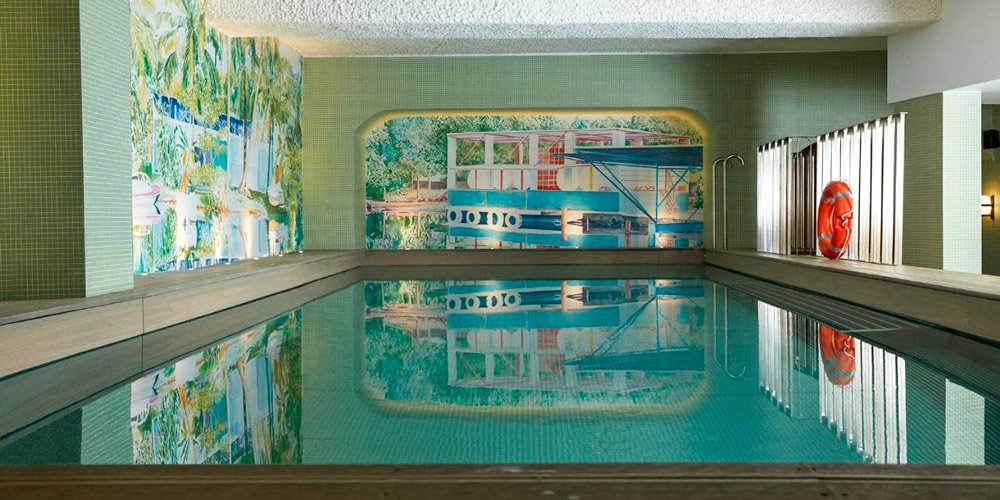 The tranquil pool at Drawing House Hotel
The tranquil pool at Drawing House Hotel
This 4-star boutique hotel in the 14th is getting high praise from travelers. Guests appreciate the artful decoration, the quiet rooms, easy access to the Metro, and the tranquil pool. Opt for the deluxe room which is larger, on a higher floor and has its own private balcony.
7. The Market at Edgar-Quinet
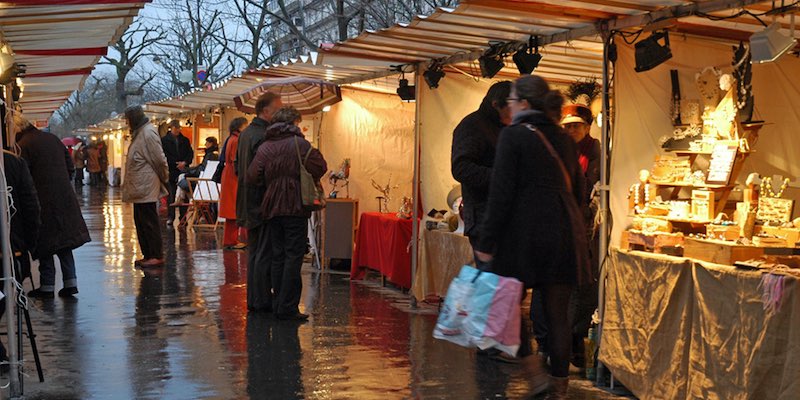 The Market at Edgar-Quinet, photo from the market's website
The Market at Edgar-Quinet, photo from the market's website
This pleasant, tree-lined boulevard that borders Montparnasse Cemetery is the location of a couple of equally pleasant street markets. Twice during the week, on Wednesdays and Saturdays, there is a really good food market set up in the stalls located on the green median between the roadways.
On Sunday mornings, artisans and craftspeople install themselves in the stalls to offer up their creations and discoveries. The boulevard itself seems to head directly into nearby Tour Montparnasse, whose looming presence dominates the skyline.
- Boulevard Edgar-Quinet, between Rue du Départ and Boulevard Raspail
- 14th Arrondissement
- Food market Wednesdays & Saturdays, approximately 7:30 AM to 2:30 PM
- Crafts market Sundays, 9:00 or 10:00 AM to dusk
- Crafts Market Website…
![]()
Top-Rated Paris Museum Tours
|
The Louvre's Greatest Masterpieces |
Musé d'Orsay Guided Tour |
|
The Louvre's Greatest Masterpieces |
8. Fondation Cartier Pour l'Art Contemporain
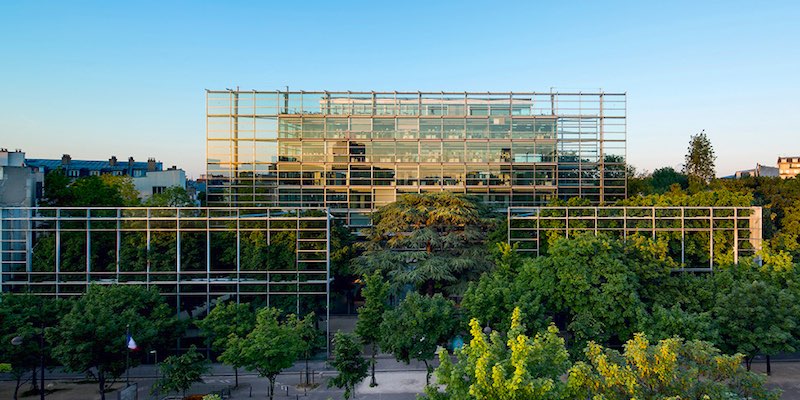 Exterior of the Fondation Cartier, photo by Luc Boegly
Exterior of the Fondation Cartier, photo by Luc Boegly
If you've already seen the major art museums in Paris, you might want to take a look at this off-the-beaten-path space. Fondation Cartier, as it's called by Parisians, is a modern art museum founded by the luxury watch brand to boost young artists' chances to reach a larger audience.
The museum and exhibition space, by famed museum designer Jean Nouvel, also features a large modern garden. If you get the chance, attend one of the foundation's Nomadic Nights that present the work of little-known contemporary artists.
- 261 Boulevard Raspail
- 14th Arrondissement
- Metro – Raspail or Denfert-Rochereau
9. Place Denfert-Rochereau & The Lion de Belfort
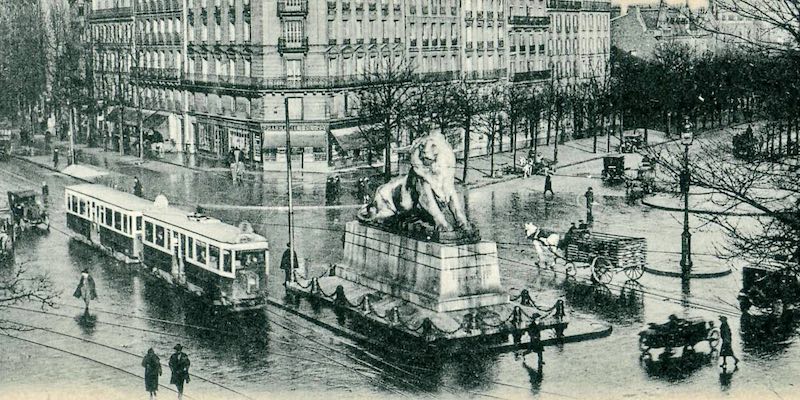 Vintage view of Place Denfert-Rochereau & its lion
Vintage view of Place Denfert-Rochereau & its lion
After you've seen Fondation Cartier, head south along Raspail to reach Place Denfert-Rochereau. This has to be one of the more confusing traffic intersections in Paris — it includes three other squares (including entrance to the Paris Catacombs as well as the Musée de la Liberation de Paris) and it's where six or seven major streets meet up. (We just counted them to find out there are eight streets coming into place.)
For all that, though, it's a pleasant enough place to visit and it's here, in the middle of Denfert-Rochereau, that you find the large statue, Lion de Belfort, a copper-plated sculpture by Auguste Bartholdi. You may remember that Bartholdi also sculpted the State of Liberty. In fact, the Lion has been placed to that it looks towards that other, distant, statue.
What's the story behind the Lion de Belfort? In 1870, during the unnecessary and fairly ridiculous Franco-Prussian War (that ended the reign of Napoleon III), the city of Belfort was the only place in Alsace to resist the Prussian army and to remain part of France. To commemorate this Bartholdi created a stone sculpture of a lion at the foot of the Belfort citadel. The Place Denfert-Rochereau statue is a one-third-size replica of the first, completed in about 1880. (In case you're in Quebec, there's a later replica in Montreal.)
![]()
The Best Evenings in Paris
|
Dinner & Cabaret at the Moulin Rouge |
VIP Dinner Cruise with Bateaux Parisiens |
|
Dinner & Cabaret at the Moulin Rouge |
10. Aqueduc de Médicis – Regard XXV
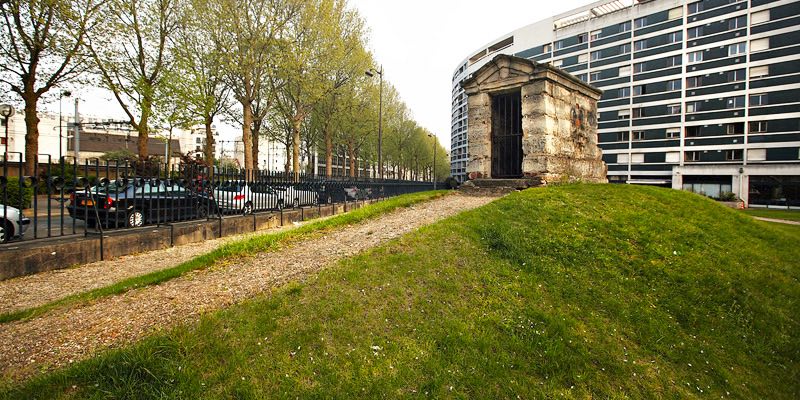 Kiosk above Regard 25, photo by Benoit Fauvet
Kiosk above Regard 25, photo by Benoit Fauvet
If you leave Place Denfert-Rochereau and walk a little ways along Avenue René Coty (one of the eight street spoking off the place) you might notice a bit of vacant land on your right-hand side with what looks like a shed in the middle. This small structure is actually a fairly important piece of Paris history, for it's a part of the Medici Aqueduct, built in 1613 to supply water to the city from the springs at Rungis.
The construction of a new aqueduct was the brainwave of Marie de Médicis, widow of Henry IV and mother of then-current king Louis XIII. (Marie was at the time Queen of France and the regent, ruling until her son would come of age. In this period she also began the work on Jardin de Luxembourg.)
Within Paris the Aqueduc de Médicis runs a few metres underground.The regards dotted along its length seem to be a means of aerating the water and letting impurities drop out. Access to the regards is through the type of stone shed (kiosk) you see next to Avenue René Coty, which is numbered Regard 25. There is no public access to the regard or aqueduct, but a few years ago it was open for public viewing during the 400th anniversary celebration. The aqueduct is still in use today.
- Between 6 and 10 Avenue René Coty
11. Parc Montsouris
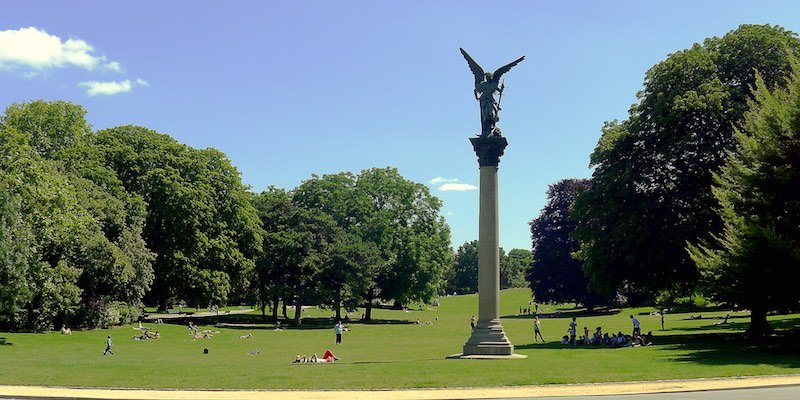 Parc Montsouris in the 14th, photo Wikipedia by Mbzt
Parc Montsouris in the 14th, photo Wikipedia by Mbzt
Think the best parks are reserved for the central Paris arrondissements? If so, this 37-acre park will change your mind. From Regard XXV, continue along Avenue René Coty for another eleven or twelve minutes and you'll discover a piece of country in the city. Paths wander through beautiful foliage, there are statues and even a pond with geese. It borders on Paris City University. If you're into French New Wave cinema, this is where Cléo meets Antoine in Agnes Vargas' Cléo de 5 à 7.
- Metro – Porte d'Orléans
- RER – Cité Universitaire
- Other Cléo de 5 à 7 Locations…
![]()
Skip the Lines at the Eiffel Tower
|
Eiffel Priority-Access Tours |
Eiffel Tower Tour to Level 2 or 3 |
|
Eiffel Priority-Access Tour |
12. Paroisse Notre-Dame-du-Travail
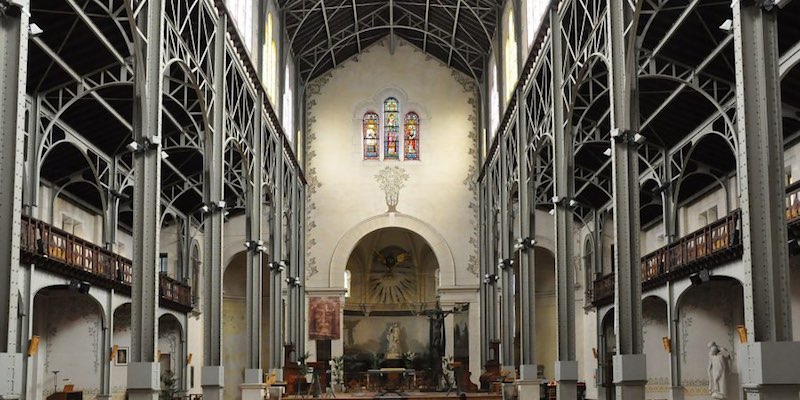 Iron-knit interior of the workers' church, Paroisse Notre-Dame-du-Travail
Iron-knit interior of the workers' church, Paroisse Notre-Dame-du-Travail
Tucked in behind the massive complex of Gare/Tour Montparnasse, and within sight of the train tracks, is this iron and wood church, built in the heyday of the iron work of Gustave Eiffel and architect Victor Balard. (Think Eiffel Tower and the iron-and-glass buildings of Les Halles.)
Once a rural area outside the city limits, the construction of Gare Montparnasse brought growth, and workers, to the former village. By 1850 there were 2,000 inhabitants, mostly workers at the new factories and train stations. So, when a new church was needed, it made sense to design it so workers would feel at home. A building of iron and wood was constructed — using materials they worked with every day. The church, started in 1896, was completed in time for the Paris Exposition Universelle of 1900.
The church is a fascinating addition to the older Gothic churches of Paris. Among the iron and wood construction you can see four paintings from the 1920s that represent four saints of the world of work — Saint Luc, Saint Francis of Assisi, Saint Eloi, and Saint Fiacre.
- 59 Rue Vercingétorix
- 14th Arrondissement
- Metro – Pernety
- Website…
13. Villa Seurat
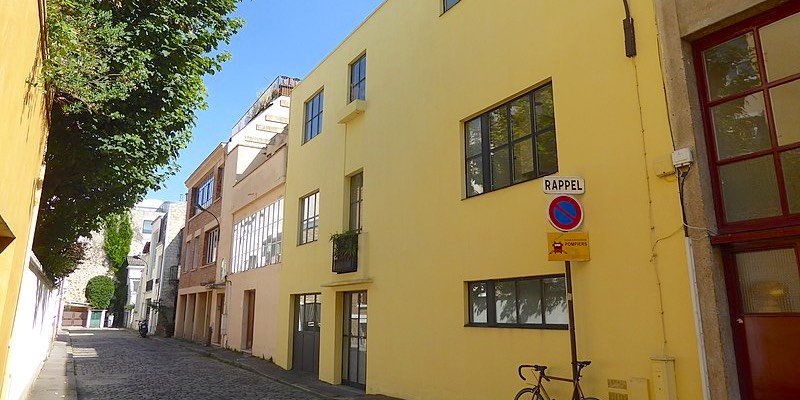 Artists' enclave Villa Seurat, photo by VVVCFFrance
Artists' enclave Villa Seurat, photo by VVVCFFrance
When Art Nouveau met reinforced concrete in the 1920s their lovechild was modernist architecture. This was the period when Mies van der Rohe, Walter Gropius, and Le Corbusier were working. In Paris in 1926 a "city of artists" was created on a cul de sac in the 14th Arrondissement, where modernist architects designed studio-homes for contemporary artists. (We suppose this group would today be called "creatives".)
Villa Seurat, as the project was dubbed, was named for painter Georges Seurat (1859-1891). Here, over a two-year period, about twenty artist's residences were designed by a handful of architects, but mostly by 30-year-old André Lurçat (1894-1970). (Lurçat later was largely responsible for rebuilding French cities after World War II.)
Artists and writers of the day lived and worked in the studios. Although not many of them are household names today — like writer Frank Townshend, sculptor Robert Couturier, composer Maurice Thiriet — Henry Miller did live at #34, where he was joined for a period by writer Anaïs Nin.
- Access at 101 Rue de la Tombe-Issoire
- 14th Arrondissement
- Metro – Alésia
![]()
Experience the Splendor Of Versailles
|
Versailles with Priority Access + Gardens |
Half-Day, Skip-the-Line Tour of Versailles |
|
Versailles with Priority Access + Gardens |
14. Boulevard Montparnasse
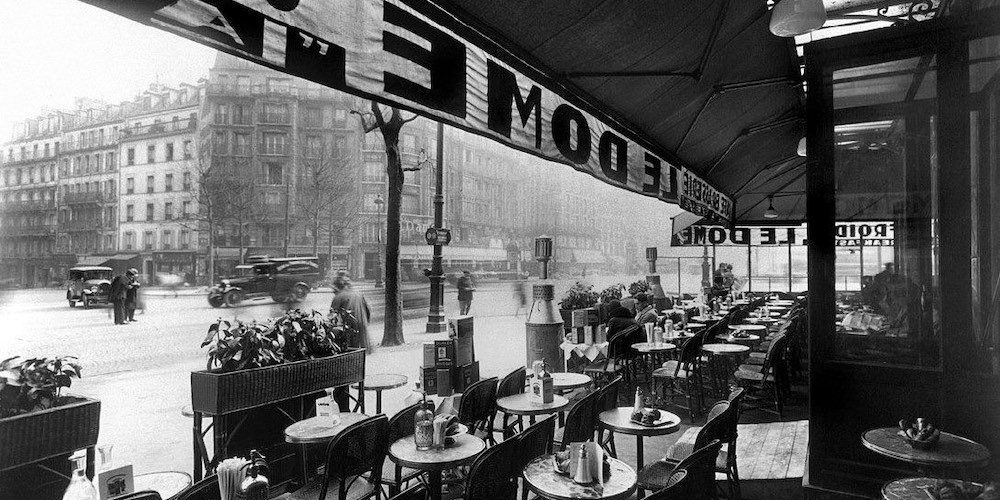 Boulevard Montparnasse as seen from Le Dome in 1926
Boulevard Montparnasse as seen from Le Dome in 1926
Between the World Wars it seemed like Boulevard Montparnasse was Lost Generation Central, with hundreds of new expatriates making their way to this part Paris every week. It became the place to be after creatives abandoned the Montmartre of Renoir and Picasso. You might be most familiar with the Americans who filled the cafe and salons in the 1920s, but artists from many countries landed here, as did peasants arriving at the Montparnasse train station from western France.
Here are just a few of the names that could be found in the cafes along Boulevard Montparnasse at various times during this era — Ford Madox Ford, Modigliani, Picasso, Diego Rivera, Hemingway, Jean Cocteau, Erik Satie, Peggy Guggenheim, William Faulkner, and Dorothy Parker. As many as 30,000 Americans lived in Paris in the mid 1920s.
Many of the cafes and restaurants from those earlier years are still in operation today. Even if they are past their glory days, you can still feel the vibe of the Lost Generation at Le Dôme, La Closerie des Lilas, La Rotonde, Le Select, La Coupole. Most of these can be found grouped around the intersection of Boulevard Raspail, although for us the best experience is on the terrace at La Closerie des Lilas (photo) a little farther down, at Rue Notre Dame des Champs.
- LE DÔME
- 108 Boulevard Montparnasse
- CAFÉ DE LA ROTONDE
- 105 Boulevard Montparnasse
- LE SELECT
- 99 Boulevard Montparnasse
- Website…
- LA COUPOLE
- 102 Boulevard Montparnasse
- Website…
- LA CLOSERIE DES LILAS
- 171 Boulevard Montparnasse
- Website…
15. Mairie du XIVe Arrondissement
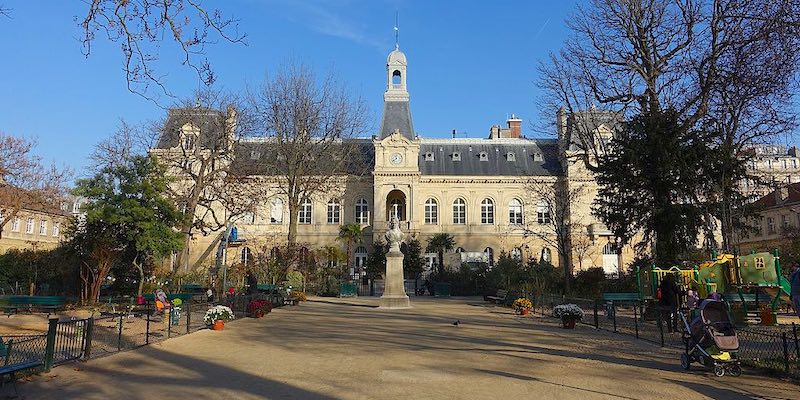 Town hall of the 14th Arrondissement, photo Wikimedia by Guilhem Vellut
Town hall of the 14th Arrondissement, photo Wikimedia by Guilhem Vellut
The mairie, or town hall, of the 14th Arrondissement is located among pleasant urban parks Square Ferninand-Brunot, Square de l'Aspirant Dunand and Place Gilbert Perroy. In fact, it's probably the most nicely situated of all the mairies of Paris. The building's tower can be spotted among the trees that surround the parks and line the streets.
It was designed by Claude Naissant (1801-1879) and completed in 1858 as the mairie of the city of Montrouge. When towns and villages around Paris were annexed two years later in 1860, the building became the city hall of the newly-created 14th Arrondissement.
- 2 Place Ferdinand Brunot,
- 14th Arrondissement
- Mairie Website…
![]()
Find Hotel Deals for Your Dates in Paris
Check the complete list of Paris hotels to find current sale prices on rooms in every arrondissement. Save 10%, 20%… or even more! |
Paris Hotel Deals |
Find Hotel Deals for Your Dates in Paris
Save on hotels in every arrondissement of Paris – the Latin Quarter, Saint Germain, the Right Bank, the Marais, near the Eiffel Tower. Save 10%, 20%… or even more! |
14th Arrondissement Resources
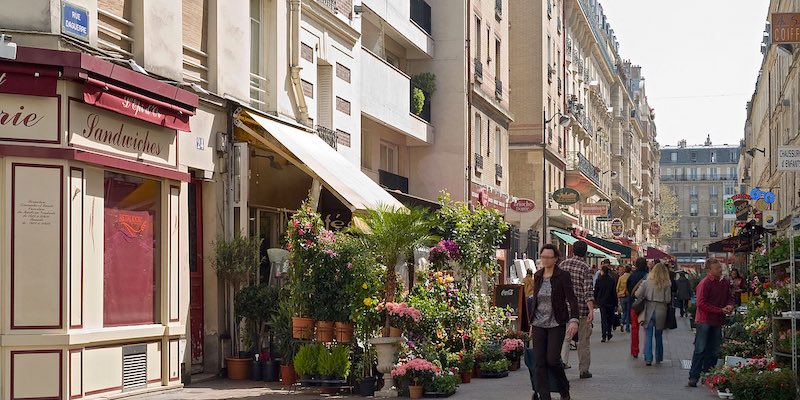 One of the many shopping streets in the 14th, photo Wikimedia by Myrabella
One of the many shopping streets in the 14th, photo Wikimedia by Myrabella
- There are only a few Metro lines that service this large arrondissement. The two north-south lines are 13 and 4.
- The most important east-west Metro line is #6, which forms an arc cutting across the southern arrondissements, running from stations Charles de Gaulle-Etoile to Nation. (Both of those are on the north side of the river.)
- An all-organic market pitches camp at Place Brancusi on Saturdays from 9 AM to 3 PM. Along Rue de l'Ouest between Rue Jules Guede and Rue de Perceval. Metro Gaîté
Paris Planning Guides
 Book an Airport Transfer
Book an Airport Transfer |
 VIP to Champagne
VIP to Champagne |
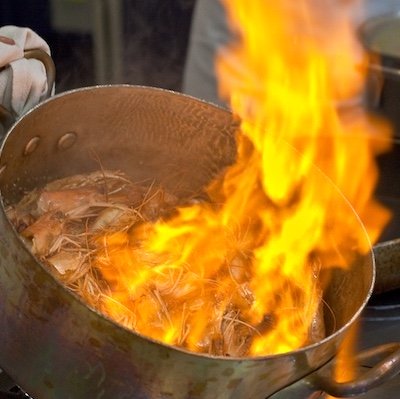 Top 10 Food Tours
Top 10 Food Tours |
 Glorious Dinner Cruises
Glorious Dinner Cruises |












